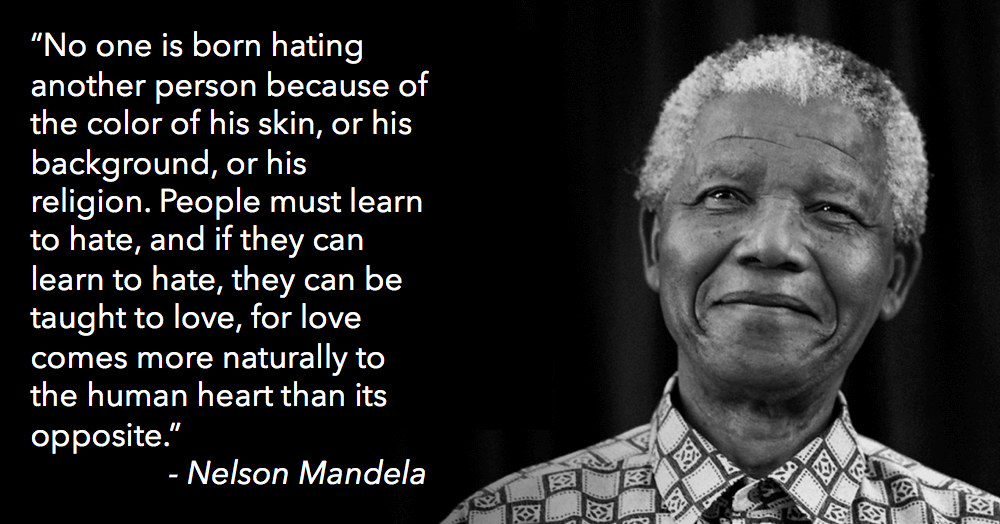What You Can Do When the Swastika Appears in Your Classroom
This article was co-authored with Katya Mocalis. For more resources or if you have any questions, please contact her at kmocalis@illuminateed.com or Dr. Gail Thompson at gthompson@illuminateed.com.
*****
A high school teacher in Southern California was shocked one day to learn that one of her students had used a permanent marker to draw a swastika on the teacher’s desk. If you were facing a similar situation, what would you do?
When faced with challenging situations, educators have many options. When asked how they would handle this situation, many former teachers, school leaders, and parents shared the following recommendations.
Listen to understand the student’s perspective
Have a one-on-one conversation with the student. First, ask why he or she chose to draw that symbol and ask if the student knows the meaning behind it. If the student didn’t quite understand (and was simply bored, disengaged, etc.), then educate the student on what this represents and stands for. If the student knew what the symbol stood for, listen and try to understand his or her reason for choosing to draw this symbol.
Many times, adults will automatically assume the student is racist and full of hatred, without stopping to think why the behavior occurred. Maybe it’s linked to how the student is being raised. Or it stemmed from a traumatic experience of being targeted by a specific racial or ethnic group. Or it could have been caused by peer pressure. Once you gain a better understanding, you’ll have a better idea on how to respond. Remember, there is always a reason behind something that occurs, so adults need to listen first, then correct the behavior in the best way that fits the particular situation.

Have a One-on-One Conversation With the Student
Ask your student the big and difficult questions, and see how he or she responds. Educators will be able to understand more about the student, his or her background, and the student’s point of view. Here are some questions that will help you start the conversation:
- Did you draw the symbol?
- What was your reason for drawing this symbol?
- Do you know the history behind the Swastika sign?
After listening to the responses, you will have to consider a few other factors such as:
- Was there anyone else involved?
- Who was affected by this situation?
After analyzing the answers to both sets of questions, you can design an action plan that includes “Next Steps” and “Teachable Moment Lesson Plans” for the entire class.
Educate the Entire Class
Once you have assessed the situation, and had a one-on-one conversation with the student, then you can begin to use the incident as a “Teachable Moment Opportunity.” Here are a few ways to educate your students about the history of the swastika symbol.
- Discussions – Talks can include the history of the swastika, specifically its hijacking by the Nazi Party, and its dark history and connotations. Explain why the symbol is offensive to many people regardless of religious affiliation, racial or ethnic background, or political views. You can also explain how you were affected by the incident that occurred, and ask students how they would handle a similar situation. Students should have ample time to ask questions and share their views.
- Movie Day – Show a movie about the history of the swastika. When the movie is over, students can have a related discussion, complete a writing assignment, and create an individual or group project. This exercise will get the students involved and help them further understand the gravity of this incident. The students will be able to build their own opinions and thoughts, and then share them with you. Having the students participate will allow you to understand your students on a deeper level, as well as learn their backgrounds and points of view (which could also help you drive instruction).
- Field Trip – Take students on a field trip where the students will have an in-person education about the history of the swastika symbol. The stories, pictures, and memorabilia will speak powerfully to many of your students. (If you live in Southern California, the Museum of Tolerance would be a great option).
- Group Activities – These can include having students create public awareness posters, debates, videos, mock trials, and research-based presentations, then allowing them to present their projects to the entire class.
- Healing Process – Don’t forget, it’s important to include a healing process in the action plan. For example, you can schedule a mediation session between a responsible adult and the offender to discuss the incident, along with possible consequences or steps towards restitution. The mediator can ask the following questions: Who was affected? Did the rest of the students see or know about it? If so, it will be important to include them in the healing process. Also, be sure to solicit input from the parents/guardians and other school administrators to determine how all parties involved can heal, move forward, and grow from this experience.
When faced with acts of ignorance or injustice, it’s natural for us to respond in outrage or be discouraged. But instead, we must seek for understanding, emphasize accountability, and do our best to build bridges to connect the classroom with our community. If we approach these incidents in the right way, we can possibly turn these negative events into positive learning and growing opportunities.
*****
Illuminate Education is a provider of educational technology and services offering innovative data, assessment and student information solutions. Serving K-12 schools, our cloud-based software and services currently assist more than 1,600 school districts in promoting student achievement and success.
Ready to discover your one-stop shop for your district’s educational needs? Let’s talk.

